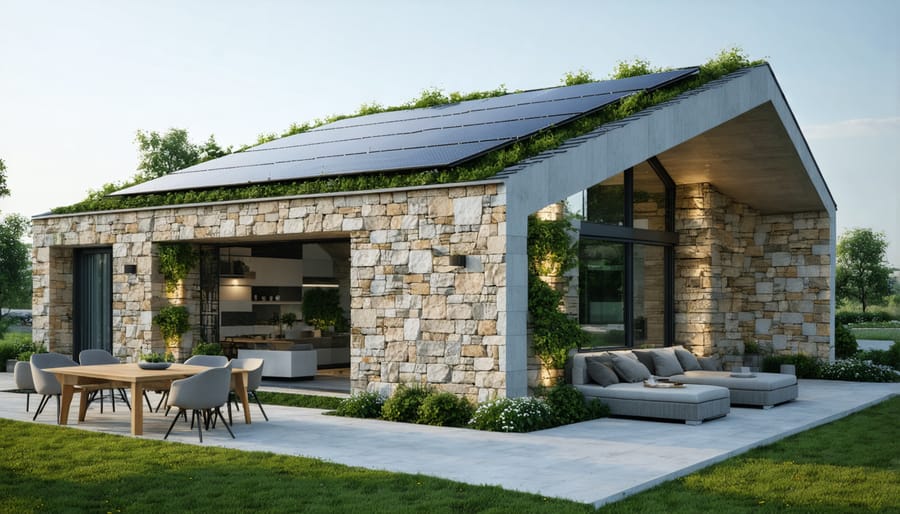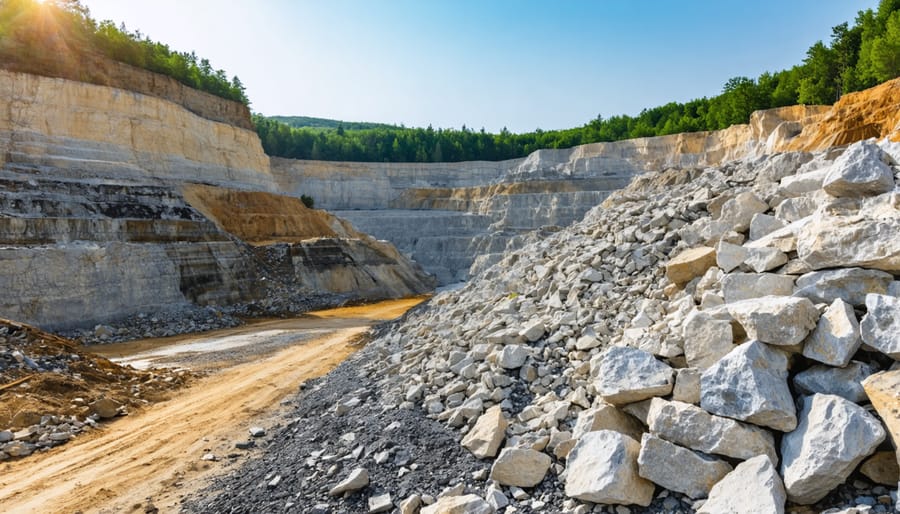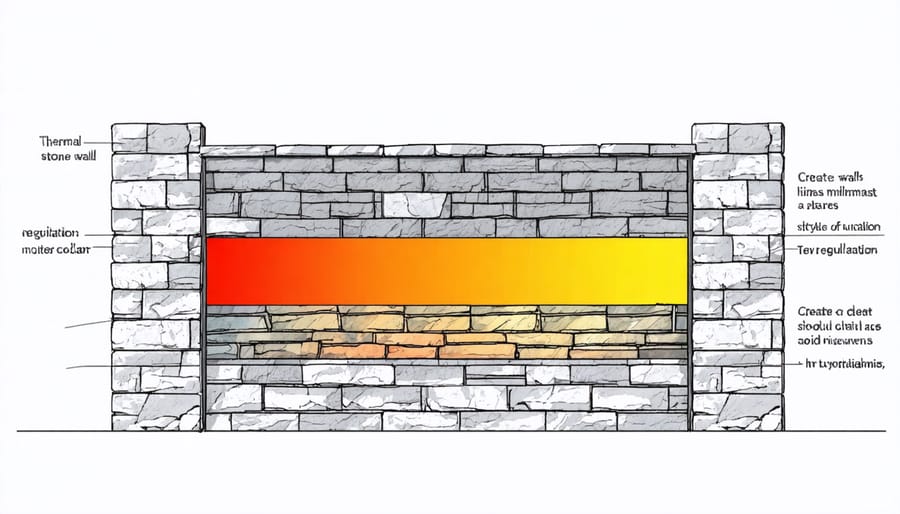Sustainable architecture fundamentally reimagines how we design, construct, and operate buildings to minimize environmental impact while maximizing human wellbeing. More than just incorporating green technologies, it represents a holistic approach that harmonizes construction with natural ecosystems, energy efficiency, and social responsibility. This innovative building philosophy integrates renewable materials, passive design strategies, and advanced resource management systems to create structures that not only reduce carbon footprints but also enhance occupant health and productivity.
At its core, sustainable architecture addresses three critical pillars: environmental stewardship through reduced resource consumption and waste; economic viability through lower operational costs and increased building longevity; and social responsibility through improved living and working conditions. Modern sustainable buildings leverage natural lighting, thermal mass properties, and innovative materials to achieve near-zero energy consumption while maintaining optimal comfort levels. From ancient passive solar designs to cutting-edge green technologies, sustainable architecture continues to evolve, proving that environmental consciousness and architectural excellence can coexist seamlessly.
This comprehensive approach to building design represents not just a trend, but a fundamental shift in how we think about the built environment’s role in creating a more sustainable future.
Defining Sustainable Architecture in the Stone Industry

Environmental Impact Assessment
The environmental impact of stone in sustainable architecture extends far beyond its initial extraction. Life-cycle analysis reveals that natural stone offers significant advantages over manufactured materials, particularly in terms of longevity and reduced carbon footprint. When properly sourced and implemented according to sustainable landscape design principles, stone construction can last centuries with minimal maintenance requirements.
Environmental assessment of stone buildings considers several key factors: quarrying impacts, transportation energy costs, installation methods, thermal performance, and end-of-life recyclability. Modern quarrying techniques have significantly reduced extraction impacts, while local sourcing helps minimize transportation emissions. Stone’s thermal mass properties contribute to passive heating and cooling, reducing operational energy consumption throughout the building’s lifetime.
Additionally, stone’s durability means fewer replacement cycles and less waste generation compared to shorter-lived materials. When buildings are eventually decommissioned, stone can be readily repurposed or recycled, creating a closed-loop material cycle that aligns with circular economy principles. This cradle-to-cradle approach makes stone an environmentally responsible choice for sustainable construction projects.
Economic Sustainability Factors
Natural stone architecture offers compelling economic advantages that extend well beyond initial construction costs. Buildings constructed with sustainable stone typically demonstrate superior longevity, often lasting centuries with minimal maintenance requirements. This durability translates into significant long-term cost savings, as stone structures require less frequent repairs and replacements compared to conventional building materials.
The thermal mass properties of stone contribute to reduced heating and cooling costs, naturally regulating indoor temperatures and decreasing energy expenditure. When properly sourced and installed, stone buildings can maintain their structural integrity and aesthetic appeal for generations, increasing property values and reducing lifecycle costs.
Furthermore, sustainable stone architecture often qualifies for various green building certifications and tax incentives, providing immediate financial benefits to property owners. The recyclability and reusability of stone materials also offer economic advantages, as stones can be repurposed or resold when buildings undergo renovation or demolition.
Modern technological advances in stone cutting and installation have improved efficiency, reducing labor costs while maintaining quality. This combination of durability, energy efficiency, and material longevity makes sustainable stone architecture a fiscally responsible choice for long-term investment.
Key Elements of Sustainable Stone Practices
Responsible Quarrying Methods
Modern quarrying practices have evolved significantly from traditional stone extraction methods, incorporating advanced technologies and environmental considerations. Today’s sustainable quarrying emphasizes minimal waste production, reduced energy consumption, and careful landscape management.
Leading quarries now employ diamond wire cutting and computer-controlled machinery, which enable precise extraction with less material waste. These technologies also significantly reduce noise pollution and dust emissions compared to older methods. Water recycling systems are increasingly common, collecting and filtering process water for reuse, thereby minimizing environmental impact on local water resources.
Site rehabilitation has become a crucial component of responsible quarrying. Operators now develop comprehensive restoration plans before extraction begins, ensuring the landscape can be effectively restored post-quarrying. This includes preserving topsoil, maintaining local biodiversity, and creating new habitats where possible.
Modern quarries also prioritize resource efficiency through selective extraction techniques. By carefully mapping stone deposits and planning extraction patterns, operators can maximize the yield of usable material while minimizing disruption to surrounding areas. Many facilities now incorporate renewable energy sources to power operations and implement strict waste management protocols that include recycling stone fragments for aggregate production.
These sustainable practices ensure that natural stone remains a viable building material for eco-conscious architecture while preserving local ecosystems for future generations.

Local Sourcing and Transportation
Local sourcing of stone materials plays a crucial role in sustainable architecture, offering both environmental and economic advantages. By utilizing stone from nearby quarries, projects significantly reduce transportation-related carbon emissions and fuel consumption. This practice, known as reducing material miles, helps minimize the overall environmental impact of construction projects.
Beyond environmental benefits, local sourcing strengthens regional economies by supporting local businesses and preserving traditional stoneworking crafts. It also ensures that buildings maintain a authentic connection to their surroundings, as local stone naturally complements the regional architectural character and landscape.
When selecting local stone, architects and builders should consider several factors:
– Availability and quantity of stone within a 500-mile radius
– Transportation methods and their environmental impact
– Quality and durability of local stone varieties
– Processing capabilities of nearby fabricators
– Long-term maintenance requirements
Many successful sustainable projects demonstrate the viability of local sourcing. For example, the renovation of historic buildings often incorporates stone from original quarries, ensuring perfect material matches while supporting local industry. Modern transportation logistics, including rail and water transport where possible, further enhance sustainability by reducing fossil fuel consumption.
Smart logistics planning, such as coordinating deliveries and optimizing load efficiency, helps minimize the environmental impact of stone transportation while maintaining project timelines and cost-effectiveness.
Modern Applications and Innovations
Energy-Efficient Design Strategies
Natural stone plays a pivotal role in creating energy-efficient buildings through its inherent thermal properties and strategic implementation. The high thermal mass of stone allows it to absorb, store, and gradually release heat, creating a natural temperature regulation system that reduces the need for mechanical heating and cooling.
During summer months, stone walls and facades absorb excess heat during the day, keeping interiors cooler. As temperatures drop at night, this stored heat is slowly released, maintaining comfortable indoor conditions. In winter, the process works in reverse, with stone capturing solar heat and redistributing it throughout the building when needed.
This passive temperature control can significantly reduce energy consumption and associated costs. Studies have shown that buildings incorporating natural stone in their design can achieve up to 30% reduction in heating and cooling expenses compared to conventional construction materials.
Stone’s durability also contributes to long-term sustainability. With proper maintenance, stone structures can last centuries, reducing the need for replacement and minimizing the environmental impact of construction waste. Additionally, locally sourced stone reduces transportation-related carbon emissions and supports regional economies.
Modern architects enhance these natural properties by combining stone with contemporary design techniques. Examples include utilizing stone in thermal walls, incorporating it into passive solar designs, and using it strategically in south-facing walls to maximize heat gain in colder climates.

Water Conservation Features
Natural stone plays a crucial role in creating water-efficient stone designs that help conserve this precious resource while maintaining aesthetic appeal. Permeable stone pavements allow rainwater to naturally filter through to the soil, reducing runoff and replenishing groundwater supplies. These systems typically combine carefully selected stone materials with specific installation techniques to maximize water absorption and filtration.
Stone walls and features can be strategically positioned to direct and collect rainwater for landscape irrigation or greywater systems. When combined with proper drainage solutions, natural stone installations help prevent water pooling and erosion while maintaining soil stability. Rain gardens bordered with stone retain moisture and filter pollutants, creating sustainable micro-ecosystems within the architectural landscape.
Thermal mass properties of stone also contribute to water conservation by reducing temperature fluctuations and associated water loss through evaporation. In water features, natural stone’s durability minimizes leakage and maintenance requirements while providing effective water circulation and aeration. Strategic placement of stone elements can create shade and minimize water requirements for surrounding vegetation.
Modern sustainable designs often incorporate traditional water management techniques, such as stone channels and collection basins, updated with contemporary materials and methods. These solutions demonstrate how ancient wisdom can be adapted to address current environmental challenges while preserving architectural integrity.
Sustainable stone architecture stands at the forefront of modern construction’s evolution toward environmental responsibility. As we’ve explored, the integration of natural stone in sustainable design offers multiple benefits, from reduced carbon footprint to enhanced building longevity. The durability and timeless appeal of stone continue to make it a preferred choice for architects and designers committed to creating environmentally conscious structures.
Looking ahead, technological innovations are reshaping how we approach stone architecture. Advanced quarrying techniques, improved processing methods, and sophisticated design tools are making sustainable stone construction more efficient and accessible than ever before. The industry’s growing focus on circular economy principles promises even greater advancements in stone recycling and reuse.
The future of sustainable stone architecture lies in balancing traditional wisdom with modern innovation. As climate change concerns intensify, the demand for sustainable building materials will only increase. Natural stone’s inherent properties – its durability, low maintenance requirements, and thermal mass capabilities – position it perfectly to meet these challenges.
For architects, designers, and property owners, embracing sustainable stone architecture isn’t just an environmental choice; it’s an investment in the future. By combining age-old building materials with contemporary sustainable practices, we can create structures that not only minimize environmental impact but also stand the test of time, proving that sustainability and architectural excellence can go hand in hand.










